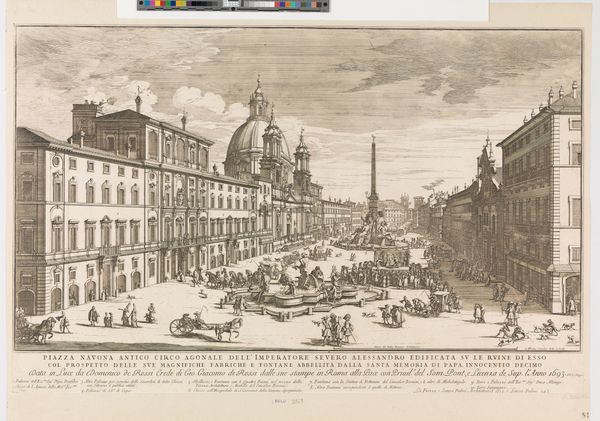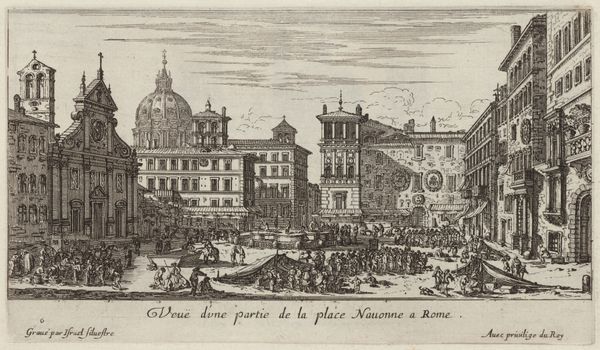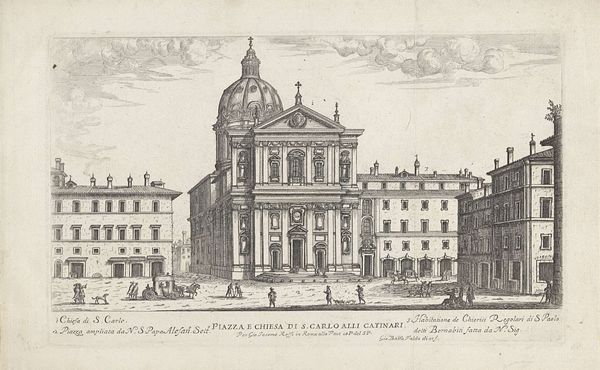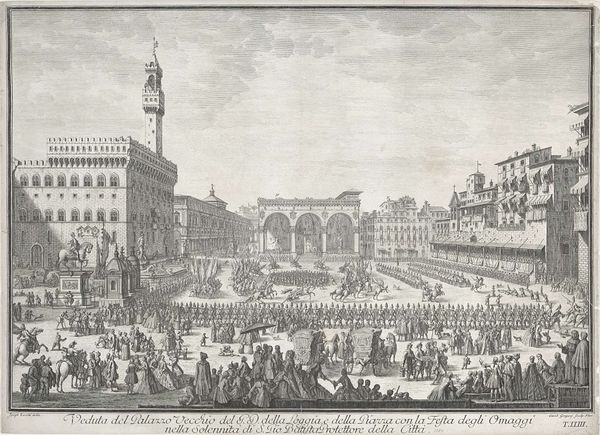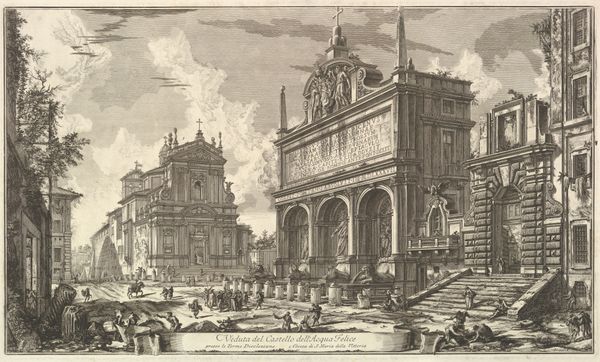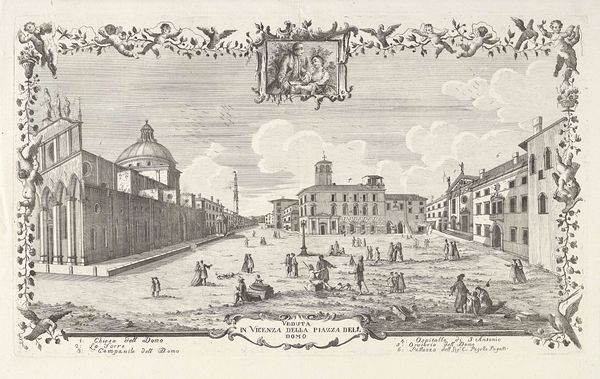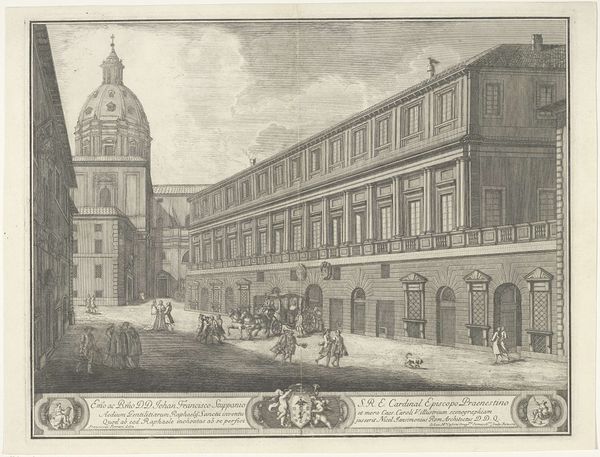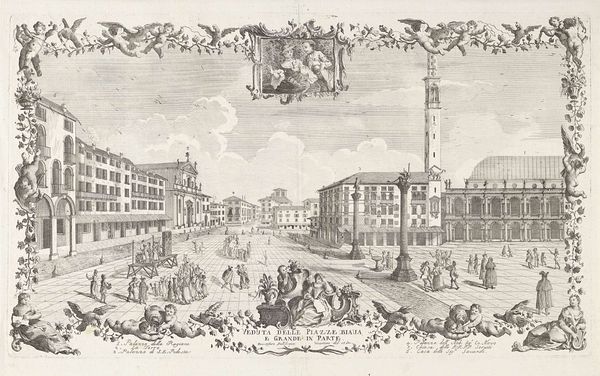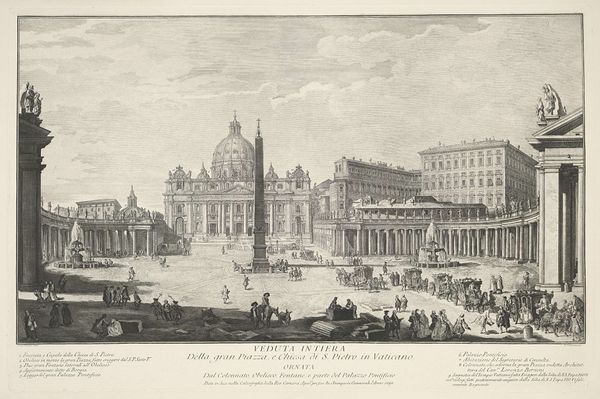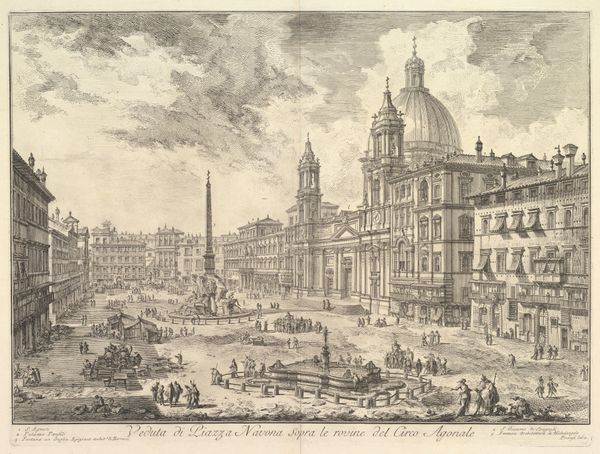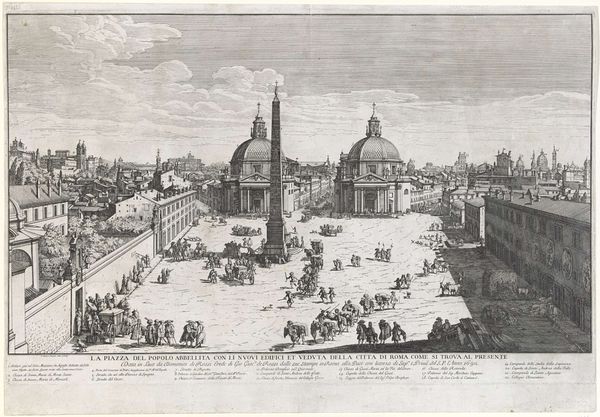
Piazza Navona, Rome 1693
Copyright: CC0 1.0
Curator: Gomar Wouters’s "Piazza Navona, Rome" seems at first glance like a simple record of urban space, but it speaks volumes about power and representation in 17th-century Rome. Editor: It really is a detailed depiction. What I find most compelling is the contrast between the grandeur of the architecture and the everyday life bustling in the piazza. How do you interpret this juxtaposition? Curator: The grand architecture, commissioned by the papacy, served to project authority, didn't it? Yet, the piazza was a space of intersection. Considering the obelisk, what do you know about its history? Editor: I believe obelisks are ancient symbols of power, taken from Egypt. Curator: Exactly. Their placement in the Piazza underscores a narrative of conquest and appropriation. So, how does that affect your viewing of this urban landscape? Editor: It makes me question whose stories are being told and whose are being erased. It isn’t just about the beautiful buildings, it’s about how power shapes space. Curator: Precisely. This etching invites us to consider the complex interplay of art, power, and social dynamics. Editor: I hadn't thought about it that way. It’s definitely more complex than just a pretty view!
Comments
No comments
Be the first to comment and join the conversation on the ultimate creative platform.
